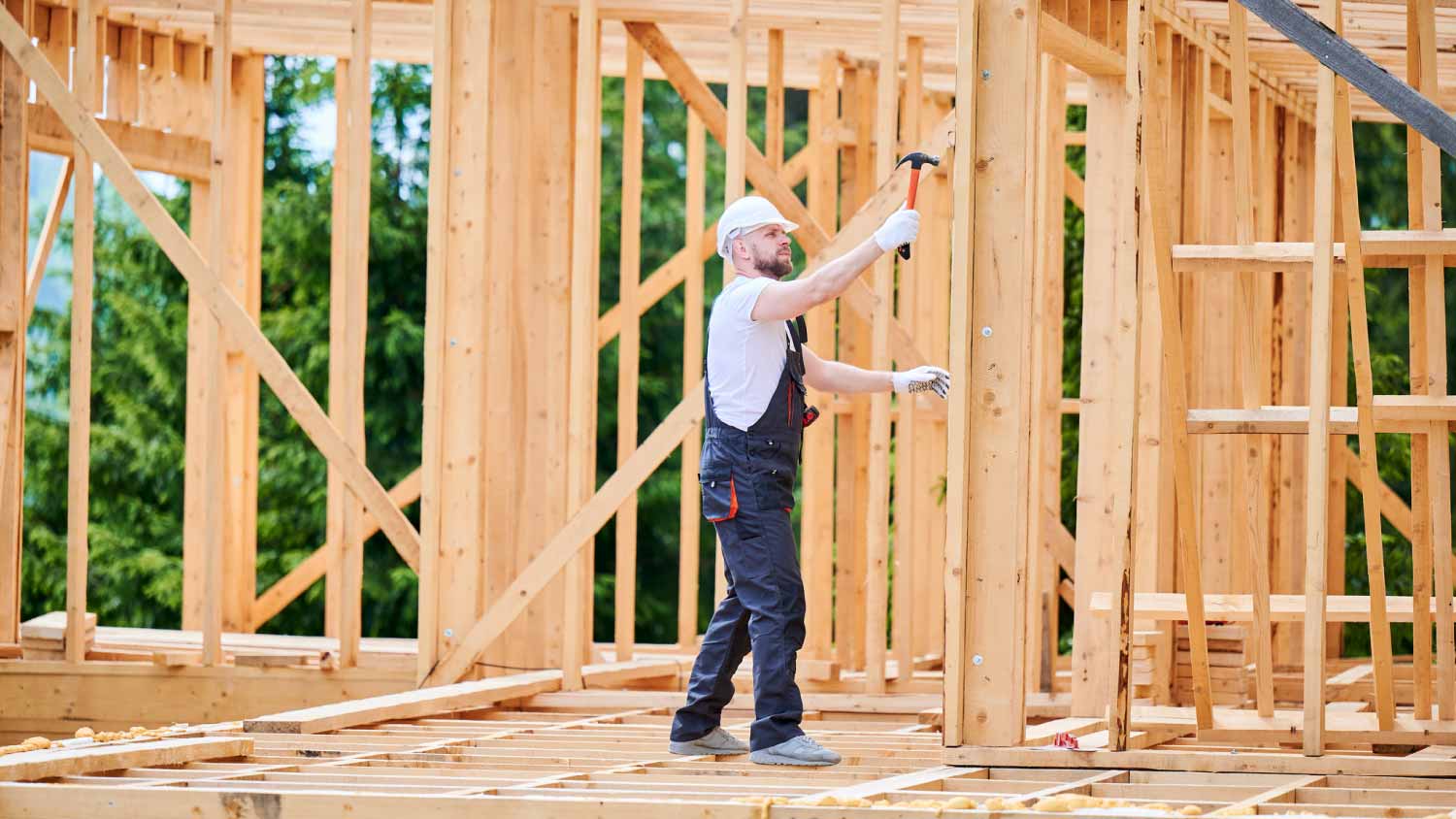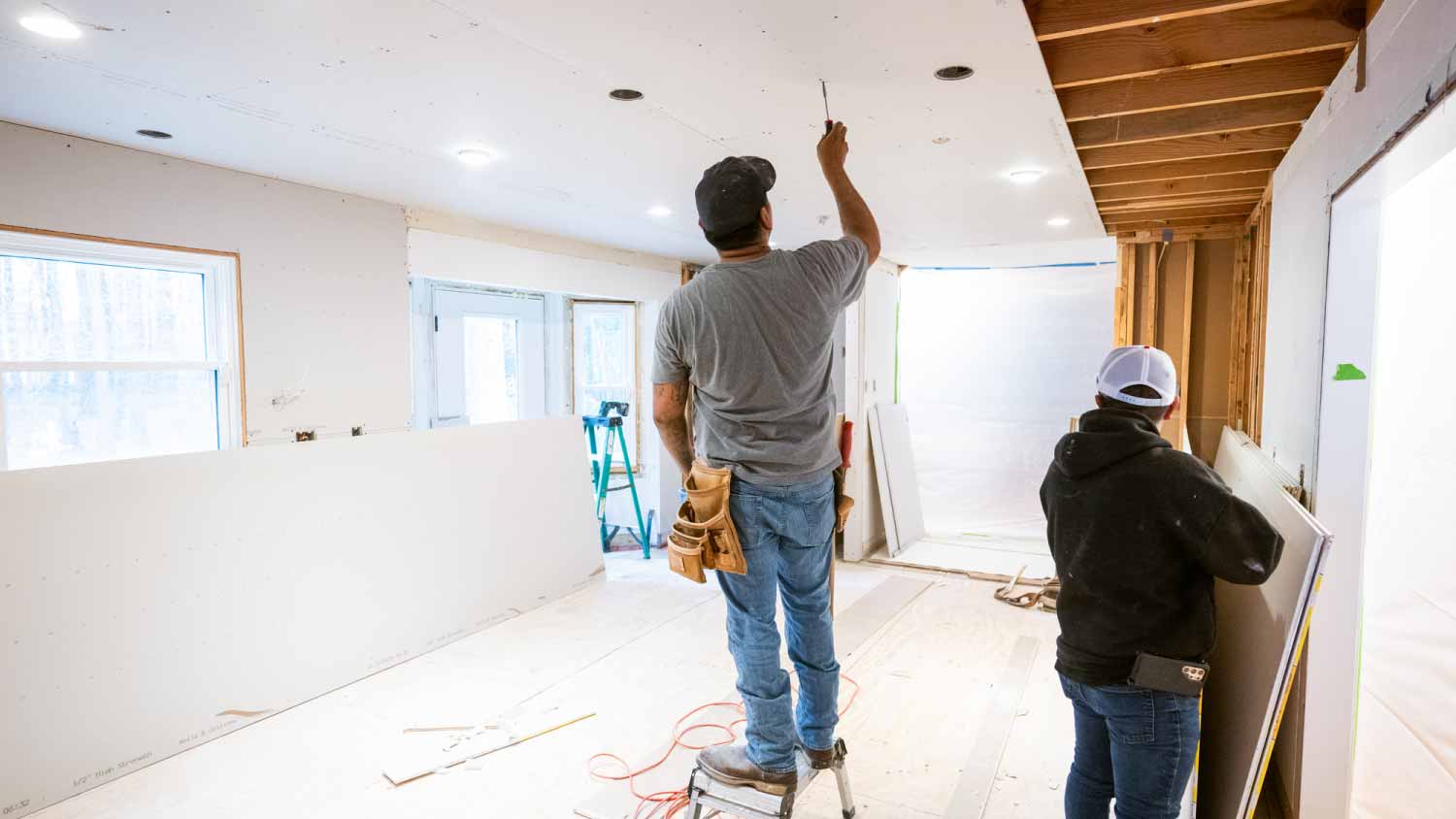
Building a home and looking to go as green as possible? Learn about the cost to build a green home and how energy-efficient features will affect the total.
When cookie-cutter just won’t cut it


Building a custom home costs an average of $300 per square foot.
You’ll need a full team of professionals to plan and execute your build.
Starting with pre-made plans and modifying them can make for an easier process.
Speak with an architect before buying land to ensure you have what you need.
Building custom can lead to surprises. Budget for 20% more than you expect.
There’s nothing quite like walking into a custom home that you designed and brought to life, but it’s a long road to get there that’s full of lots of planning and preparation. In this step-by-step guide, we’ll explain everything you need to consider when building a custom home to ensure the process goes as smoothly as possible.

Building a custom home is a bit more complicated than building based on pre-set plans and far more complex than buying a pre-owned home. Use the checklist below as a quick guide to walk yourself through the process to prepare before you fully commit.
First things first: you need a plot of land to build on. You should carefully consider the location and the climate, and it’s a good idea to speak with an architect and a custom homebuilder early on to make sure the land you choose is suitable for the house you envision. Consider zoning restrictions and access to utility lines when deciding.
Next, you can officially hire an architect to begin your custom designs. An architect who specializes in custom designs will work with a structural engineer to ensure the house you’re building is structurally sound and to your specifications.
Now, you can take the first real step toward building your home: running utility connections to the plot. If your land was previously developed, you may be able to skip this step. You may need to install an appropriately sized septic system at this stage if you don’t have access to municipal sewer lines.
The next part of the process is hiring a custom homebuilder near you. This professional will work closely with your architect and other pros, like plumbers, electricians, carpenters, and more, to start to bring your vision to life. Hiring a general contractor for a custom home build is highly recommended, as the process of hiring and managing individual contractors is challenging and time-consuming.
Your custom homebuilder will help pull the necessary permits for your new home. Some municipalities will issue general building permits, while others may require individual permits for the following:
Septic system installation
Plumbing
Electrical
HVAC installation
Construction
Solar installation
With the permits out of the way, you can begin preparing your plot of land for construction. Some lucky homeowners will be able to skip this step, while others will need to hire experts to tackle the following:
Land clearing
Tree removal
Land grading
Soil compaction
Excavation for the foundation
The next step is to pour the foundation. Most professionals who build homes will pour the foundation in just a few hours, but building the concrete forms beforehand and allowing for curing and drying afterward can make the foundation installation take several weeks.
Your homebuilder will then frame out your structure, including interior and exterior walls, floor joists, and the roof structure. Expect framing to take three to seven days.
“Drying in” the structure means sealing off the interior to protect the interior from the elements. This step involves installing sheathing, roofing, siding, windows, and doors. After this step, most of the work will take place inside, and rain and snow are no longer a concern.
Your professionals will then start to rough in utilities, which involves installing plumbing and drain lines, electrical wiring, outlets, switches, connections for fixtures, and ductwork for your HVAC system, if applicable.
Your homebuilder will then install insulation and close the walls with drywall. They’ll spackle and tape, and many will paint interior walls and ceilings before moving on to the flooring.
Next, your expert will install flooring throughout your home. Most will lay down temporary protective coverings over the floors to protect them during the following steps.
Once the walls and floors are done, your builder will install cabinets, fixtures, and appliances in your kitchen and bathrooms. They may wait to install the flooring in those areas until after everything else is installed.
At this point, your custom home should really start to be taking shape, but the finishing touches will make it feel complete. The finishes include the following:
Hanging interior doors
Installing trim and crown molding
Installing electrical fixtures
Tiling bathroom walls
Installing backsplash
Installing plumbing fixtures
Installing HVAC equipment
Installing gutters and downspouts
Installing exterior light fixtures
Installing shutters
Installing exterior trim
At this point in the process, your plot of land will be a mess from all of the vehicle and foot traffic during construction. The last part of the process should include finishing the landscaping. This could just mean seeding the lawn, but many homeowners building custom homes will install hardscaping and flower beds to complement their new builds.

Building a custom home is similar to choosing pre-made home plans in many regards, but there are a few key differences.
You have total control over the size and layout of your home
Custom home builds are at least 30% more expensive than building from pre-set plans
Building a custom home takes longer because there’s more planning involved
You’re more likely to run into snags with permitting for a custom build since nothing is pre-approved
You need to hire an architect and a structural engineer for a custom build but not a spec home. Pre-made plans for spec homes are already designed and approved
Building a custom home costs an average of $825,000, and most homeowners pay between $300,000 and $1,200,000 to bring their visions to life. On average, you’ll spend $300 per square foot for a custom home build, but even those prices can range from $200 up to $550.
From average costs to expert advice, get all the answers you need to get your job done.

Building a home and looking to go as green as possible? Learn about the cost to build a green home and how energy-efficient features will affect the total.

Use our home demolition cost calculator to estimate your project’s price and learn what factors impact the total cost before you start your demolition.

Dreaming of building your own home from the ground up? Learn how much it costs to build a house yourself and if it’s worth it to skip the pro on this project.

Home makeovers are challenging. A renovation consultant can help take the stress out of your next remodeling project.

It’s exciting to start planning your dream home, but first, you need to find the right professional to manage the work. Discover who to hire to build a house.

Brick houses were the standard of the 19th and 20th centuries, and they’re looking to make a comeback. Find out if a brick exterior is right for you.